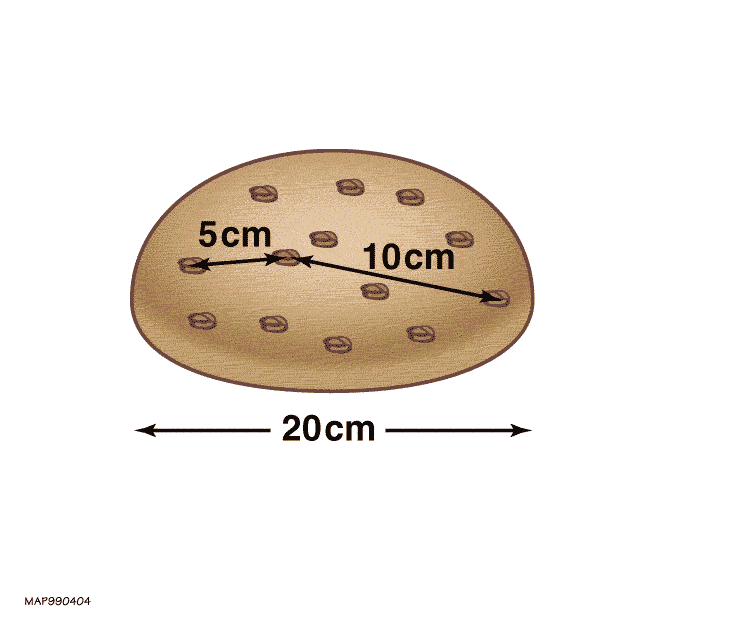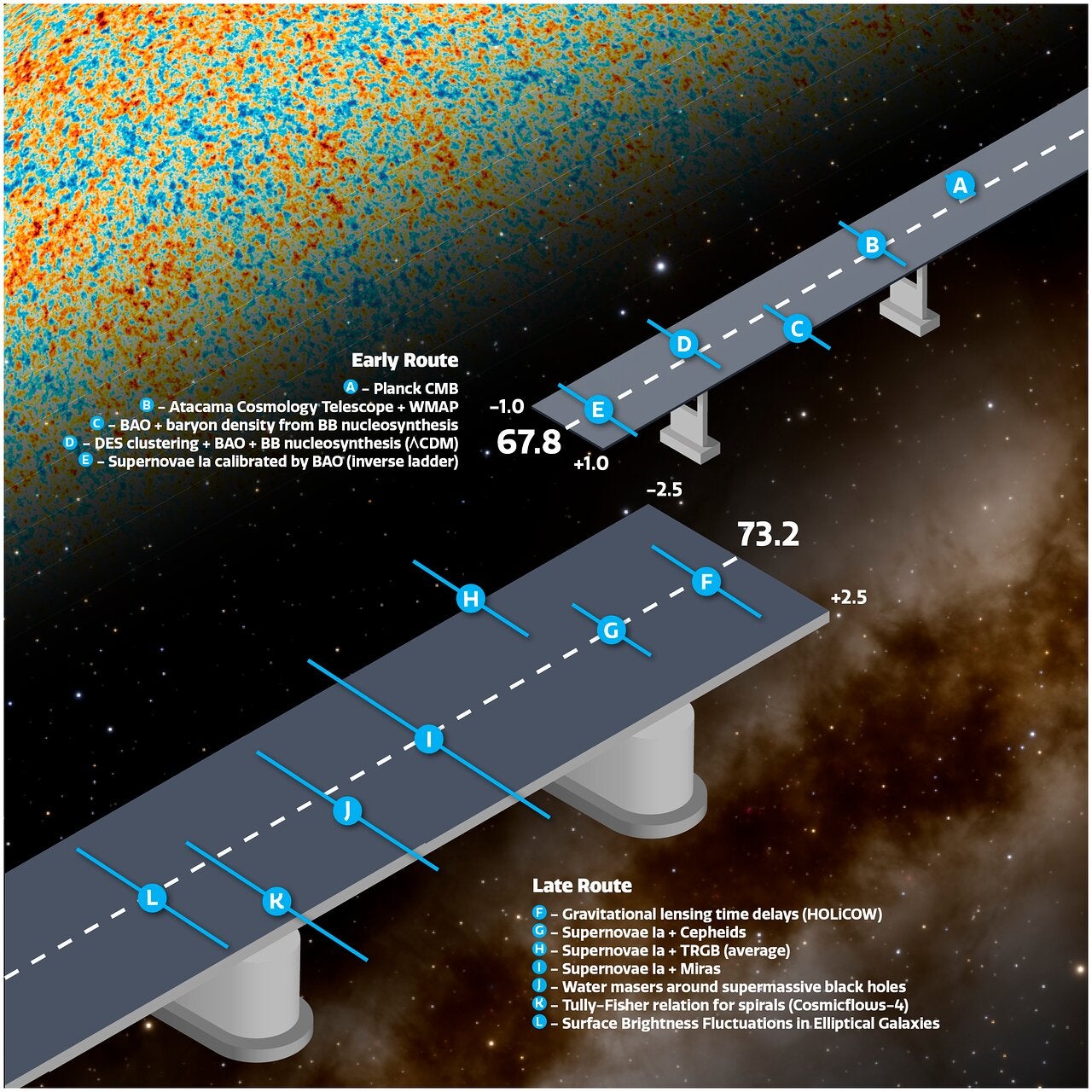Why Astronomers Are Questioning the Standard Model of Cosmology
A recent study published in The Astrophysical Journal Letters has offered the most accurate measurement of the distance to the Coma Cluster of galaxies so far — and this has intensified a crisis in cosmology.
The issue at hand is that when examining our immediate cosmos, we find the expansion rate exceeds predictions made by prevailing physical theories. The discrepancy between these theoretical forecasts and actual observations has come to be referred to as the Hubble tension.
For many years, the Hubble tension has persistently troubled researchers, indicating that there might be inaccuracies within their current models. However, with fresh insights from observing the Coma Cluster — located relatively close to us in cosmic terms — experts argue that this inconsistency appears even more pronounced than before. "What we once called a 'tension' can now truly be termed a ‘crisis,'" stated Daniel Scolnic, the lead author of the study and a researcher at Duke University. press release .
Therefore, what is the speed of the universe's expansion?
Scolnic’s recent research builds upon an earlier study published in 2024 that utilized information gathered by the Dark Energy Spectroscopic Instrument (DESI), located at the Mayall Telescope atop Kitt Peak in Arizona. This equipment aims to investigate the universe's expansion dynamics by examining far-off galaxies moving away from our vantage point.
Researchers determine a galaxy’s distance by assessing how much its emitted light shifts towards longer, reddish wavelengths because of the Doppler effect, known as redshift. In general terms, the quicker a galaxy seems to recede from us, the more distant it lies from our position. However, for an accurate measurement of the universe's expansion rate, scientists require separate calculations of galactic distances using different techniques.
A technique referred to as the Fundamental Plane method is one approach used for this purpose. This method targets elliptical galaxies—older systems where the original spiral patterns have vanished due to collisions and mergers. By examining both the brightness of these galaxies and the spread of velocities among their stellar populations, the method deduces the actual dimensions of the galaxy. Once the real size is established, determining the precise distance becomes straightforward through an analysis of apparent sizes.

One of several techniques used for determining galaxy distances is the Fundamental Plane approach. These various strategies collectively form what experts refer to as the cosmic distance ladder. As researchers peer deeper into space, every technique relies on a benchmark set by the preceding method to establish measurements further outward.
In 2024, the DESI collaboration published an updated version of the Fundamental Plane technique, which was calibrated using the known distance to the massive Coma Cluster—a cluster dominated by elliptical galaxies located close to us. Using this approach, they determined the present-day expansion rate of the universe, referred to as the Hubble constant or simply \(H_0\). 0 They determined a rate of 76 kilometers per second per megaparsec — however, this figure has an uncertainty of almost 5 km/s/Mpc because the measurement to the Coma Cluster isn’t very precise.
Therefore, the Coma Cluster acted as a crucial benchmark; should astronomers manage to determine a more accurate distance to this cluster, they would significantly enhance their calculation of the universe’s expansion rate.
"When the DESI collaboration published their ... paper, and I noticed in the abstract that their measurement could be significantly improved with just one additional element, I became incredibly enthusiastic because I realized I could contribute that missing component," explains Scolnic. .
A cosmological crisis
The information that Scolnic might offer included a more precise measurement of the distance to the Coma Cluster through an alternative independent technique. Besides hosting numerous elliptical galaxies, the Coma Cluster is teeming with Type Ia supernovae. These cosmic events act like “standard candles” due to the fact that physics states these occur when white dwarfs attain a specific threshold mass; hence, their intrinsic luminosities are quite predictable. Consequently, this allows for accurate measurements of vast distances: objects appear fainter the further they lie from us. Scolnic’s research group analyzed the light patterns of 13 such supernovae within the cluster and determined the distance to the Coma Cluster to be approximately 320 million light-years, with only a slight margin of error at about 7 million light-years.

Using this reference point, scientists improved the Fundamental Plane relationship and calculated a value for the Hubble constant at 76.5 kilometers per second per megaparsec, with an error margin of only 2.2 km/s/Mpc — which is twice as accurate as the initial figure from the DESI Collaboration.
This value closely aligns with various independent determinations of the Hubble constant derived from observations of celestial bodies within our local cosmos.
However, it intensifies the strain with the expansion rate forecasted by the standard model of cosmology, referred to as the Lambda Cold Dark Matter (ΛCDM) model. Scientists start calculating the model’s forecasts by examining the radiation emitted following the Big Bang, which is called the Cosmic Microwave Background (CMB). Using ΛCDM, they then project these findings forward over time. Yet, this method produces a current-day The Hubble constant is merely 67.4 kilometers per second per megaparsec. .
The recent confirmation of a significantly higher distance measure for the Coma Cluster indicates that the source of the Hubble conflict might be inherent to the ΛCDM model rather than issues with measurements. As Scolnic stated, “We’re now pushing firmly against the models we’ve utilized for over twenty-five years, and these models seem to be falling short.” press release .
Is this tension able to be alleviated?
The Hubble conflict has led some cosmologists to explore models beyond the standard ΛCDM framework. A study published in The American Physical Society: Physical Review Magazines On February 18th, we examined one particular model known as the Interacting Dark Energy (IDE) model, where dark matter has the ability to exchange energy with dark energy, and vice versa.
The IDE model holds the promise of addressing not just the Hubble tension but also what is known as the S/WebAPIamodel conflict. 8 Tension refers to the discrepancy between expected outcomes and actual measurements regarding the extent to which material within the cosmos is grouped together — basically, the level of "clumpiness" evident in the universe.
By employing this approach, the IDE scenario aligns both the CMB and Type Ia supernova observations with the Fundamental Plane technique. In contrast, within the ΛCDM model, dark matter and dark energy can solely influence each other through gravitational forces; however, in the IDE framework, these components can additionally engage in interactions beyond gravity and transfer energy and momentum between them.
The study suggests that throughout much of the universe's lifetime, the energy flow typically moved in one direction. However, approximately 3 billion years ago, once the quantities of dark matter and dark energy balanced out, this energy flow inverted.
The primary researcher behind the study, Miguel Sabogal from the Universidade Federal do Rio Grande do Sul in Brazil, indicates that this shift leads to an accelerated expansion of the universe compared to what is observed in the ΛCDM model. This acceleration might account for why Scolnic’s determined value of the Hubble constant—and other observations based on more contemporary cosmic data—is greater than predicted by the ΛCDM framework.
Sabogal and his team have a long road ahead to fully validate the IDE model, but they say work like this is needed when other well-known methods haven't fully achieved their goal.
As first author Miguel Sabogal from the Universidade Federal do Rio Grande do Sul in Brazil points out, “Time and again, history demonstrates that whenever our most advanced theoretical structures clash with experimental data, it’s merely a question of time until a more sophisticated and inclusive model arises.” He adds, “It remains our duty as researchers to explore and refine potential theories like ours—the IDE framework.”
The post Why astronomers are beginning to question the standard model of cosmology appeared first on Magazine .

Post a Comment for "Why Astronomers Are Questioning the Standard Model of Cosmology"